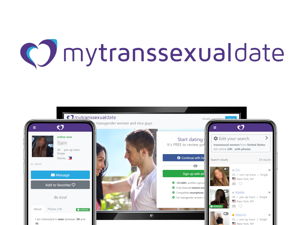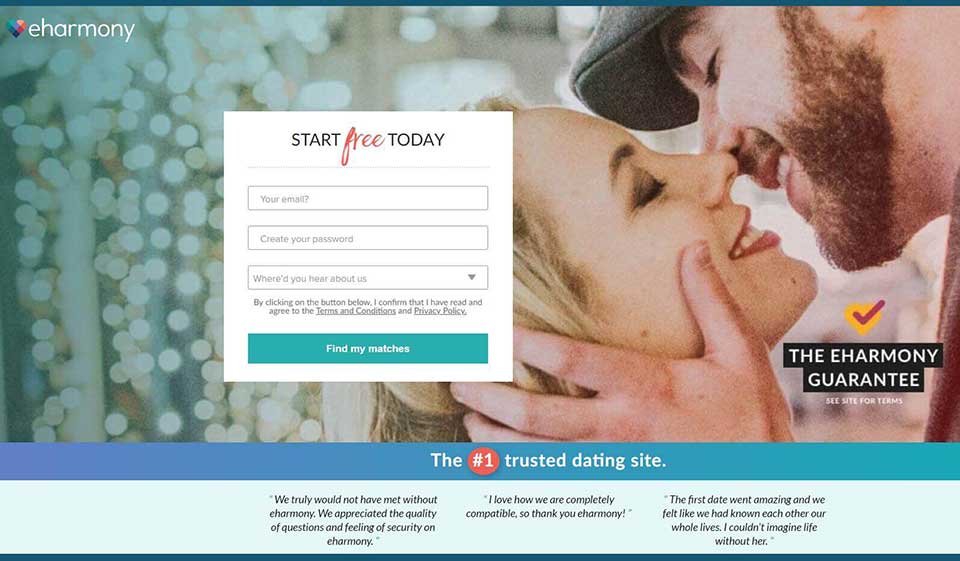My Dates Website Review
Leading destination for customer ratings and reviews of businesses. 100+ million customers helped. Search reviews of 100,000+ businesses to find the best.

- Match.com members form a diverse, global community of singles who share common goals - to meet other singles, find dates, form romantic relationships and meet life partners. Young and old alike, gay and straight, from everywhere around the world, singles come to Match.com to flirt, meet, date, have fun, fall in love and to form meaningful.
- Welcome to the best free dating site on the web. We know online dating can be frustrating, so we built our site with one goal in mind: Make online dating free, easy, and fun for everyone. Finding a date with Mingle2 has never been simpler. Our singles community is massive, and you're only a couple of clicks away from finding a date.
NIH is discontinuing granting one-year continuous submission status to reviewers with recent substantial review service, and it is moving back continuous submission deadlines.
Clarification of NIH’s Application Submission/Resubmission PolicyEffective immediately, this Notice consolidates and clarifies policy concerning submission and resubmission of applications for grants and cooperative agreements submitted to the National Institutes of Health (NIH) and...
This page will help you understand how the U.S Department of State (DOS) allocates immigrant visas, the DOS Visa Bulletin process, and specific ways to adjust status depending on your situation.
The Immigration and Nationality Act (INA) sets the number of immigrant visas the U.S. Department of State (DOS) can issue to aliens seeking to become lawful permanent residents (get a Green Card) each year.
Immigrant visas for immediate relatives of U.S. citizens are unlimited, so they are always available. Immediate relatives include:
- The spouses of U.S. citizens;
- The children (unmarried and under 21 years of age) of U.S. citizens;
- The parents of U.S. citizens at least 21 years old; and
- Widows or widowers of U.S. citizens if the U.S. citizen filed a petition before they died, or if the widow(er) files a petition within two years of the citizen’s death.
Immigrant visas for the family-sponsored and employment-based immigrant preference categories are numerically limited, so they are not always immediately available. For more information, please see the Green Card Eligibility page.
In general, family-sponsored preference visas are limited to 226,000 visas per year, and employment-based preference visas are limited to 140,000 visas per year. (By statute, these annual visa limits may be exceeded when certain immigrant visas from the previous fiscal year’s allocation were not fully used.) Both categories are divided into several sub-categories, each of which receives a certain percentage of the overall visa numbers as prescribed by law. In addition, there are limits to the percentage of visas that can be allotted based on an immigrant’s country of chargeability (usually the country of birth).
When the demand is higher than the supply of visas for a given year in any given category or country, a visa queue (a waiting list or backlog) forms. To distribute the visas among all preference categories, DOS allocates the visas according to a prospective immigrant’s preference category, country of chargeability, and priority date. DOS uses the priority date to determine an immigrant’s place in the visa queue. When the priority date becomes available, or is “current,” immigrants may be able to apply for adjustment of status (or apply for an immigrant visa with DOS if they are outside the U.S.) and obtain lawful permanent resident status, if otherwise eligible.
We will accept Form I-485, Application to Register Permanent Residence or Adjust Status, from family-sponsored and employment-based adjustment of status preference applicants according to the monthly Visa Bulletin that DOS publishes as a guide for issuing visas at U.S. Consulates and Embassies.
The monthly DOS Visa Bulletin summarizes the availability of immigrant visas according to the:
- Application Final Action Dates chart (consistent with previous Visa Bulletins) and
- Dates for Filing Applications chart indicating when immigrant visa applicants should be notified to assemble and submit required documentation to the National Visa Center.
When we determine there are more immigrant visas available for the fiscal year than there are known applicants, you may use the Dates for Filing Applications chart to determine when to file an adjustment of status application with USCIS. Otherwise, you must use the Application Final Action Dates chart to determine when to file an adjustment of status application with USCIS.
Unless otherwise indicated on our Adjustment of Status Filing Charts for Visa Bulletin webpage, you must use the “Application Final Action Dates” for determining when you can file a Form I-485 with USCIS.
DOS, working with the Department of Homeland Security, revises the Visa Bulletin each month to estimate immigrant visa availability for prospective adjustment of status applicants. If DOS makes any changes to either chart in the Visa Bulletin after publishing it, we will review those changes and determine if any further action is necessary. Check the latest dates for filing adjustment of status applications.
If you are a prospective immigrant, you can find your priority date on Form I-797, Notice of Action, for the petition filed on your behalf. The waiting time before receiving an immigrant visa or adjusting status depends on the :
- Demand for and supply of immigrant visas.
- Per-country visa limitations; and
- Number of visas allocated for your preference category.

For family-sponsored immigrants, the priority date is the date that the Form I-130, Petition for Alien Relative, or in certain instances the Form I-360, Petition for Amerasian, Widow(er), or Special Immigrant, is properly filed with USCIS.
For employment-based immigrants, the priority date depends on the following:

| If | Then your priority date is the date: |
|---|---|
| Your preference category requires a labor certification from Department of Labor (DOL) | DOL accepts the labor certification application for processing. To preserve the priority date, the petitioner must file Form I-140, Immigrant Petition for Alien Worker, with USCIS within 180 days of the DOL approval date on the labor certification or else the labor certification is no longer valid. |
| Your preference category does not require a DOL labor certification | USCIS accepts Form I-140 for processing to classify the sponsored worker under the requested preference category. |
| You are a fourth preference special immigrant, including religious workers | USCIS accepts Form I-360, Petition for Amerasian, Widow(er) or Special Immigrant, for processing. |
| You are a fifth preference investor | USCIS accepts Form I-526, Immigrant Petition by Alien Entrepreneur, for processing. |
The Visa Bulletin allows you to check your place in the immigrant visa queue. The Visa Bulletin provides the most recent date for when a visa number is available for the different categories and countries for family-sponsored, employment-based, and diversity (lottery) visas.
A visa must be available before you can take one of the final steps in the process of becoming a lawful permanent resident. Because more prospective immigrants want lawful permanent residency than the limited numbers of immigrant visas allow, not everyone can immediately get an immigrant visa. How long you must wait depends on your priority date, preference category, and the country to which the visa will be charged.


If the demand for immigrant visas is more than the supply for a particular category and country of chargeability, DOS considers the category and country “oversubscribed” and must impose a cut-off date to keep the allocation of visas within the statutory limits.
A visa is available to you when your priority date is earlier than the cut-off date shown for your preference category and country of chargeability in the applicable chart in the Visa Bulletin, as described above in the Acceptance of Adjustment of Status Applications section.
Review My Website For Free
For example, if the Visa Bulletin shows a date of 15DEC07 for China in the family preference category (F1), visas are currently available for immigrants who have a priority date earlier than Dec. 15, 2007. Sometimes the demand for immigrant visas is less than the supply in a particular category and country of chargeability. In this situation, the Visa Bulletin shows that category as “C,” meaning that immigrant visas are currently (immediately) available to all qualified adjustment of status applicants and overseas immigrant visa applicants in that particular preference category and country of chargeability.
My Dates Website Reviews
If the Visa Bulletin shows “U” in a category, this means that immigrant visas are temporarily unavailable to all applicants in that particular preference category and/or country of chargeability.
Sometimes, a priority date that is current one month will not be current the next month, or the cut-off date will move backward to an earlier date. This is called visa retrogression, which occurs when more people apply for a visa in a particular category than there are visas available for that month. Visa retrogression generally occurs when the annual limit for a category or country has been exhausted or is expected to run out soon. When the new fiscal year begins on Oct. 1, a new supply of visa numbers becomes available. Usually, but not always, the new supply returns the cut-off dates to where they were before retrogression.
In certain instances, you can file your Form I-485 together, or “concurrently,” with the underlying Form I-130 or Form I-140 immigrant petition. You may concurrently file your Form I-485 only when approval of the underlying immigrant petition would make a visa immediately available to you. If you are an immediate relative, you can always concurrently file your Form I-485 application with the underlying Form I-130.
If you are seeking adjustment of status under a family-sponsored or employment-based preference category, you may concurrently file your Form I-485 with Form I-130 or Form I-140 only if:
- Your priority date is earlier than the cut-off date listed in the “Application Final Action Dates” chart in the monthly Visa Bulletin for your preference category and country of chargeability;
- The Visa Bulletin chart indicates “C” instead of a specific cut-off date, meaning that your preference category and country of chargeability is current and that you may file Form I-485 regardless of the priority date; or
My Dates .com Review
- When permitted by USCIS (as described above in “Acceptance of Adjustment Status Applications”), your priority date is earlier than the cut-off date listed in the “Dates for Filing Applications” chart for your preference category and country of chargeability.